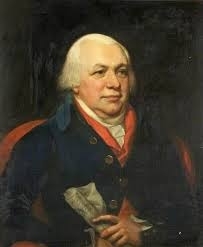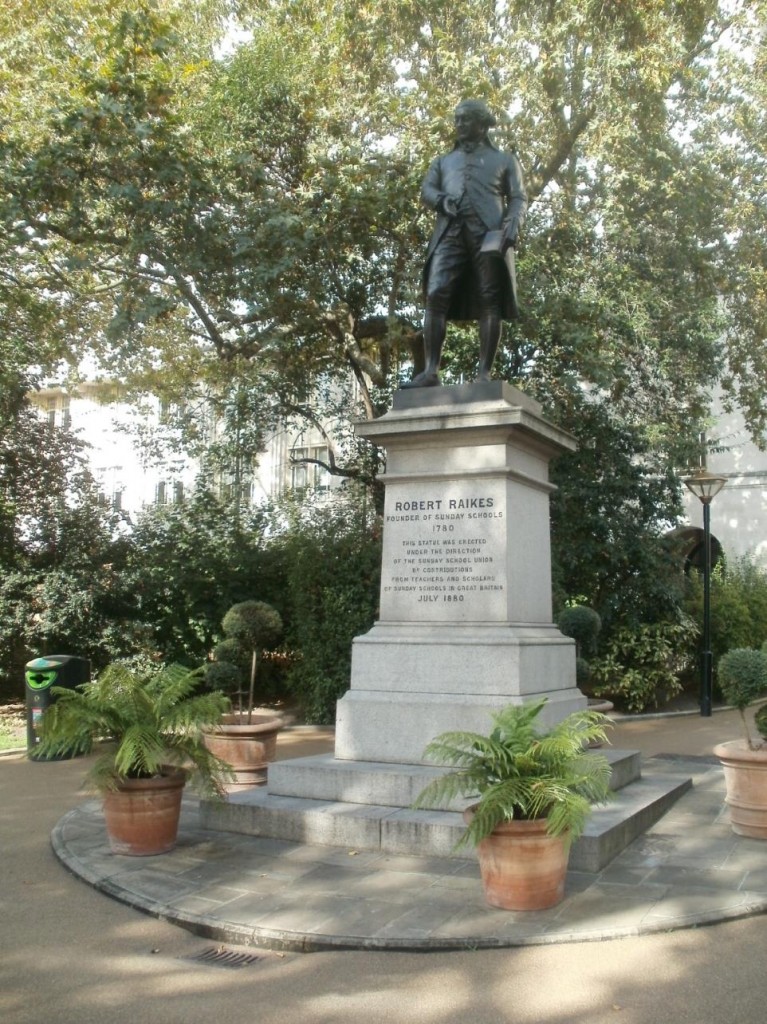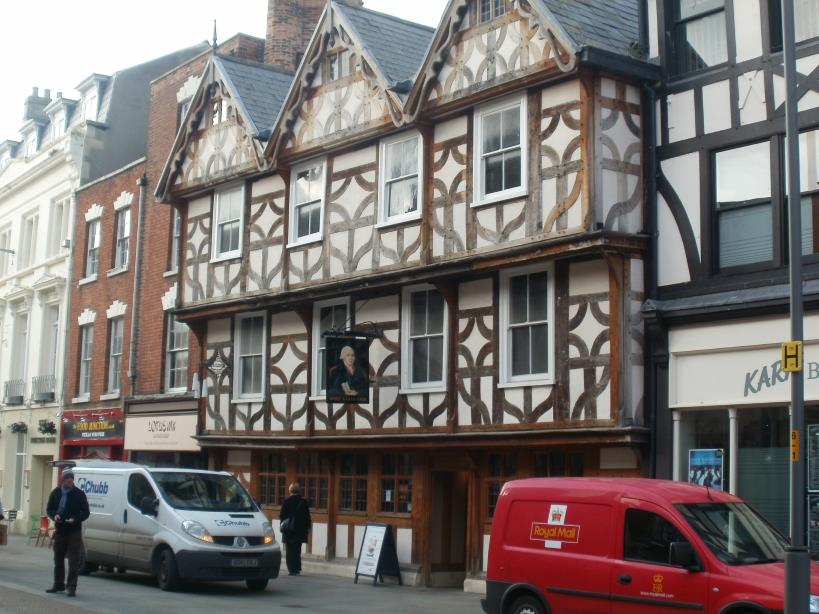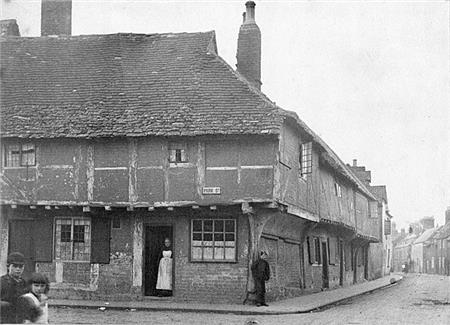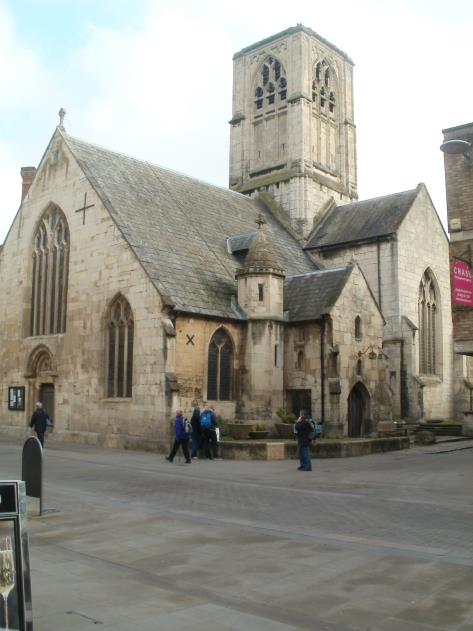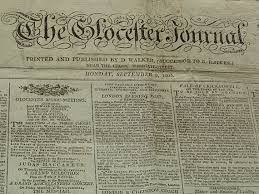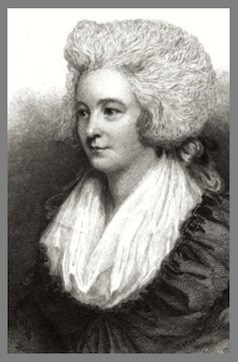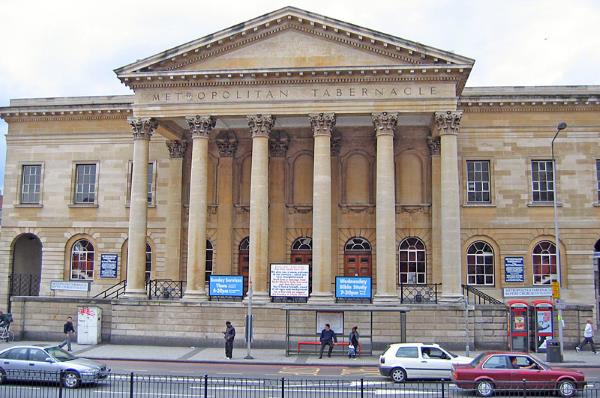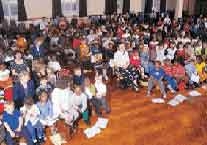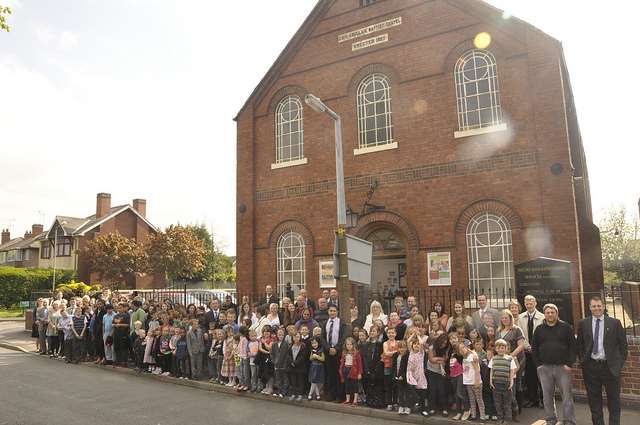The importance of Robert Raikes and others in the growth Sunday School Movement cannot be over-estimated. Therefore we hope that this illustrated address, given to us at Crich, on 23rd April 2015 by one of our own members, Chris Clarke, will be of great interest and help to you in understanding the true benefits of teaching our children Bible truth while they are still young.
~~~~~~~~~~~~~~~~~~~~~~~~~
On the Victoria Embankment in London not far from Charing Cross Station there stands a statue sculpted by Sir Thomas Brock in 1880 to celebrate the centenary of the Sunday School movement. The statue is of Robert Raikes.
The inscription reads – This statue was erected under the directions of the Sunday School Union by contributions from teachers and scholars of Sunday Schools in Great Britain July 1880.
In Gloucester in the centre of Gloucester Park stands a copy of the statue erected 50 years later in 1930, and there is a further statue in Toronto Canada
Raikes did not actually invent Sunday Schools as we shall see, they were in existence many years before 1780, but to give credit to Robert Raikes, he put Sunday Schools on the map so to speak and we shall look in detail at his work later.
So the question remains – who first started Sunday Schools?
In the scriptures in Deuteronomy Ch 31 we read:-V12-13.
that Moses said ”Gather the people together, men and women and little ones and the stranger who is within your gates, that they may hear and that they may learn to fear the Lord your God and carefully observe all the words of the law, and that their children who have not known it may hear and learn to fear the Lord your God as long as you live in the land which you cross the Jordan to possess”
Boys attended the Jewish Synagogue on the Sabbath to receive instruction as children. The Jewish historian Josephus in his book called “Antiquities” writes “Let the children also learn the laws as the first thing they are taught, which will be the best thing they are taught and will be the cause of their future felicity”
In John ch 3 v10 Nicodemas is referred to by our Lord, as “Israel’s teacher” in Acts Ch 22 v 13 Saul refers in his younger days as being taught the law be Gameliel.
Although very little is written about The Lord Jesus’ childhood until he went to the temple in Jerusalem when he was 12, we can be certain that each Sabbath he would have attended his local synagogue and received instruction from the Rabbi’s. It mentions in Luke Ch 2 v 46-47
“After three days they found him in the temple courts sitting among the teachers listening to them and asking questions, everyone who heard him was amazed at his understanding and his answers.”
Nowhere in the OT or NT are Sunday or Sabbath schools specifically mentioned, but as we read in Mark Ch 10 Jesus lovingly said “let the little children come to me and do not hinder them for the kingdom of God belongs to such as these”
Moving forward we know that in 1529 Martin Luther set up a number of Sunday schools in Germany It is said that “he established religious schools on the Lord’s day, devoted to the study of biblical catechism, singing the praises of God and the great duty of prayer”
In 1688 Rev Joseph Alleine the author of the book “Alarm to the unconverted”, started a Sunday School at his church in Taunton In 1769 a lady called Hannah Ball, who had been converted under the preaching of John Wesley set up a Sunday School in High Wycombe. Thomas King a dissenter started up a Sunday School in Dursley Gloucestershire, and there were certainly many other individual Sunday Schools in existence up and down the land.
The Oxford Historian John Richard Green who wrote “Short History of the English people” In the section dealing with the 18th century says:-
“A yet nobler result of the religious revival was the steady attempt, which has never ceased from that day to this, to remedy the guilt, the ignorance, the physical suffering, the social degradation and the poor. It was not until the Wesleyan impulse had done its work that this philanthropic impulse began. The Sunday Schools established by Mr Raikes of Gloucester at the close of the century were the beginnings of popular education”
It is true to say though, that when Raike’s opened his first Sunday School in July 1780 this really set the movement off. Although those we have mentioned above were evangelicals and had a real concern for the souls of youngsters, a far larger group were philanthropists who saw a need in the lives of youngsters, whose social conditions were appalling and they sought to do something about it.
What was life like for children in the 18th century?
To be able to appreciate this we need to look first at what life was like for youngsters during the 18th century and particularly for those who found themselves at the bottom of the social pyramid.
A historian of the times Nathaniel Kent wrote
“Those who condescend to visit these miserable tenements can testify that neither health nor decency can be preserved in them. The weather frequently penetrates all parts of them, which must occasion illness of various kinds particularly agues – a fever, which frequently visit children. And it is shocking that a man, his wife and half a dozen children lie all in one room together. Great towns are destructive both to morals and health and the great drains in cities and manufacturing towns where they put up with bad accommodation, and an unwholesome confined air, which breeds contagious distempers, debilitates their bodies and shortens their lives. Since knowledge of such appalling conditions was common what kind of monarch, what type of government and why a national church professing Christianity remained unmoved by it”
Not surprisingly, Life expectancy in the 1700’s was about 36, For the majority, particular the very poor and those living in big cities, life was very tough. Up until the middle of the 18th century large numbers of poorer families worked in agriculture or had their own piece of land. However with the introduction of the various Enclosure Acts during the 18th century large numbers left the countryside and headed into the cities in search of work. The industrial revolution also started during this time, all manner of factories were opening up, coal, iron steel to cotton mills vast numbers of men women and children were sucked into towns and cities looking for work. The streets were not however paved with gold, the living and working conditions were terrible. 50% of children born in London died before there 5th birthday,
Who then was Robert Raikes and what exactly did he do?
He was born in the city of Gloucester on 14th September 1736 His father Robert (Senior) was a prominent citizen and businessman the owner of the influential Gloucester Journal. His mother’s name was Mary Drew. The family lived very comfortably for the times. Robert attended the St Mary de Crypt grammar school and at 14 he enrolled as a scholar at the College Cathedral School.
Not much is known of his early life except that his father died suddenly in 1757 and Robert, as the eldest son became the proprietor of a large business at the age of 22. In addition to this, he also had the responsibility of looking after his aged mother his 5 brothers and 1 sister. One of his brothers, Thomas went on to become the Governor of the bank of England.
The Raikes family was also related by marriage to William Wilberforce who we will hear a little about later. On December 23rd 1767 he, Robert Raikes, married Anne Trigge and they had 3 sons and seven daughters.
Of course another famous citizen of Gloucester was George Whitfield who a few years earlier had started his ministry around Gloucester and so as Robert grew up he was aware of the ministry of Whitfield and the blessing of revival. In fact as an aside, Whitfield preached his first sermon in St Mary de Crypt in 1736.
Whitfield and the Wesley brothers were regular visitors to the Raikes family home and it is true to say they were a very influential family in Gloucester life, and anyone who was of any importance who visited Gloucester was usually entertained in the Raikes’ home.
Initially Robert was concerned regarding inmates in the Gloucester Prison – which was recorded as a truly dreadful place. Like many others during the mid 1700’s he was passionately concerned with the need of prison reform and used his paper to tell the public of the terrible conditions he saw as a prison visitor. John Howard the evangelical and prison reformer was also a lifelong friend of Raikes and in 1773 they both went round the Gloucester jail together, Howard was to say that actually Gloucester was one of the better jails!
Raikes said “Men, women and even children put under arrest for most trivial of offences and small debts were herded together with criminals of deepest dye. In the debtor’s prison, many prisoners died from small pox and gaol fever, children were born and men & women were kept in the same room together. There was no proper provision for poorer inmates and those who received no help from friends and relatives were forced to beg their food from fellow prisoners”
Raikes was able via his newspaper to make regular appeals for food, clothing and small amounts of money to enable the prisoners to buy food. He also used his newspaper to highlight the plight of those who were in prison due to debts or minor offences.
Interestingly it was through the idea of a Sunday School movement which originated in Gloucester goal, Raikes formulated his theory concerning the direct connection between ignorance and poverty and vice. This theory was to dominate Raikes’s whole thinking.
In his paper on Robert Raikes, John Carrick describes this his thinking.
“Ignorance is the root of the degradation everywhere around us,
Idleness is a consequence of ignorance,
Idleness begets vice, and vice leads to the gallows,”
Thus according to this reasoning of Raikes, it was ignorance that led to idleness and idleness that led to vice. Ultimately, therefore as far as Raikes was concerned, it was ignorance that was the cause of vice, so the obvious and logical solution to the problems of vice lay with education. Thus Raikes argues in effect that just as ignorance produces vice, so education, knowledge and enlightenment should produce the opposite of vice – namely goodness, morality and righteousness. The interesting feature here then is Raikes view implicitly held that human nature can be educated out of vice or away from vice, what was necessary was instruction and knowledge.”
To start with, Raikes paid for a tradesman or an educated person in prison for debt, to teach the other prisoners to read. However these efforts often proved fruitless and Raikes became disheartened with this approach.
Significantly Raikes concluded that efforts to teach and reform the adults were virtually doomed to failure since evil habits were by that time entrenched and established. Thus he decided to start with the child and teach him. His aim was to” to check the growth of vice at an early period by an effort to introduce good habits of acting and thinking among the vulgar” Prevention is better than punishment. The interesting feature as you can see is that Raikes was disillusioned and pessimistic with regard to the adult sunk in vice and his hopefulness and optimism with regard to the child who still enjoyed the innocence of youth. His theology was decidedly suspect and a long way off the position of Whitfield and the Wesley’s. But we shall look more at that later.
Thus it was in 1780 Raikes decided to turn his attention primarily to children. He saw little dirty neglected children with the pitiable slum born look written on their faces singing lewd, brutal songs rioting in vice and ignorance on Sundays in the streets of the cathedral city. It seems that he began his work amongst the urchins and ragamuffins of Gloucester by persuading them to meet him at 7:00am in the Cathedral yard. There at the cathedral he would gather the children, probably about 50 and sought to teach them the catechism. However this failed as the children did not want to learn and may have been suspicious of Raikes and his social class.
His second attempt was to gather some of these children into a school on Sundays. In the kitchen of a house in Sooty Alley (where the chimney sweeps lived|) he found a Mrs Meredith who he paid 1 shilling per week to run the school. About 12 – 14 boys came along the first week and were taught basic reading using the Bible. Not surprisingly it is said that Mrs Meredith had one or two disciplinary problems.
A few months later he started a second school in Southgate Street under a Mrs Critchley who was the landlady of the Trumpet Inn and evidently a strong willed and capable woman.
The original scholars from Sooty Alley were transferred to the Southgate Street School where they had a better teacher and better facilities also being just opposite the St Mary de Crypt Church near where Robert Raikes lived.
The timetable each Sunday ran as the children arrive at 10am with lessons to 12 noon They would return at 1pm and more lessons until 4pm then they would walk across the road to St Mary de Crypt Church to attend a short service during which they were catechised then to round off a full day they would return to school with more lessons until 5:30 when the children would go home. Exactly what these lessons comprised of is difficult to be certain but Dr Elmer Towns who wrote an early Raikes biography says “the early Sunday School basically aimed at teaching reading and writing with the Bible as a text book”.
Raikes was something of a disciplinarian; he introduced rules against cursing and swearing and always insisted on good behaviour and reverence during the Sunday sessions. The boys were taught to bow and the girls curtsey. He also carried a cane and was not afraid to use it in school, and he would also see to it that parents administered corporal punishment themselves in the case of recalcitrant scholars.
What was evident during those 3 years from 1780 to 1783 was the remarkable effect it had on the streets of Gloucester on Sundays. Noise and riotous behaviour was markedly reduced and a greater sense of peace prevailed across the city. During this time more Sunday Schools opened throughout the city.
What took place next was really what put Raikes on the map, because as we said at the start where as others had started Sunday Schools before Raikes, he was to use his position, his influences, his friends to publicise the work. So In 1783 Raikes wrote an article in the Gloucester Journal anonymously.
From this point onwards the grain of mustard seed as he referred to it grew at a very rapid rate. This article was picked up by other newspapers in London and other cities and the work of the Sunday schools was publicised around the country and also further afield. Raikes was to write continually from this date in his own paper giving details of the schools and news of what each of them was doing. Of course only the rich and educated were to be able to read these newspapers but this by itself had an effect upon the movers and shakers of 18th century society. Although Raikes paid his teachers 1 shilling a week, the majority of the other Sunday Schools set up by Churches and individual s were volunteers. The growth was quite phenomenal and it is estimated that after 50 years in 1831 there were 1,250,000 children attending 25% of the population.
In 1784 John Wesley wrote in one of his letters “I find these schools springing up wherever I go. Perhaps God may have a deeper end therein than men are aware of – Who knows but some of these schools may become nurseries for Christians” John Wesley also re-printed some of Raikes’ original articles in his Arminian Journal and allowed Raikes to write letters through the magazine.
In May 1784 he wrote another article in the Gloucester Journal
“The good effects of Sunday Schools established in the city are instanced in the account given by the principled persons in the pin and sack manufacturers wherein great reformation has taken place among the multitudes whom they employ. From being idle, ungovernable, profligate, and filthy in the extreme, they say the boys and girls are becoming not only cleanly and decent in their appearance but are greatly humanised in their manners, more orderly, tractable, attentive to business and of course more serviceable expected to find them. The cursing and swearing and other vile expressions which used to form the sum of their conversation are now rarely heard among them”
Here we come across one of the problems in looking at Raikes – He seems to be highlighting the need for reformation in society and a reformation of character in purely social terms and it is this emphasis which seems to come up each time. – behaviour, appearance discipline – The crucial question asked by John Carrick in his article is – “are these good effects the social consequences of the gospel of our Lord Jesus Christ, that is a by-product of the gospel or are they the very values and qualities that Raikes was aiming for”. We have seen earlier that he speaks of his attempt to check the growth of vice at an early age to introduce good habits of acting and thinking among the vulgar.
Even though he was a friend of George Whitfield and the Wesley brothers, is this the language of an evangelist convinced that the gospel is the power of God unto salvation to everyone that believes or is it the language of a social reformer convinced that education is the means of reformation to everyone that strives for it.
The conclusion that John Carrick comes to is that although he has no doubt Robert Raikes was a believer, he was not an evangelical in the same sense as Wesley or Whitfield. It is suggested that the works of Robert Raikes should be put into the category of “common grace or restraining grace rather than that of special grace” In his conclusion he poses an interesting question – “Would Raikes have ever commenced his Sunday Schools but for the appalling social conditions that prevailed 250 years ago”?
On June 17th 1787 Raikes was invited to an audience with King George III and Queen Charlotte at Windsor Castle as they had heard of what he was doing and wanted to know more about the work. A year later in 1788 when the Royal party spent a month in nearby Cheltenham, they spent a Sunday with the Raikes family and were shown around some of the Sunday Schools in the city to see the work first hand. Following this visit, more articles were written by him in the Gloucester Journal concerning the meeting, and this was further promoted by the London newspapers that Raikes had good contacts with.
As well as all the newspaper articles he wrote, he also published a book, wrote many letters and had many letters written to him from people all across the country keen and interested in starting up Sunday schools in their town.
Hannah Moore and the ongoing growth of Sunday Schools
Another Christian who was involved in starting those early Sunday schools was a remarkable lady called Hannah Moore.
She lived not far from Raikes in Cheddar in Somerset. She was born in 1745 in Bristol. Hannah went to school when 12 years old and later taught there. At an early age she found she had a gift for writing and spent a long time writing plays, poems and other literary works, in 1774 she went to London and it was there that she met up with John Newton, William Wilberforce and other members of the Clapham Sect as they were called. Wilberforce became a close friend of Hannah Moore and after she returned to Somerset in 1789 it was Wilberforce that suggested to her to start up a Sunday School. Although this area was largely rural and a far cry from the city of Gloucester he had witnessed the poverty in the surrounding area. Beside the poverty, he was upset at the lack of spiritual comfort. Two years later in October 1789 Hannah and her sister Martha opened their first school in Cheddar. They found a house for the school mistress and a barn for the classroom.
During the next 10 years, 12 more schools were opened in the villages around. Most of the money required to start these schools was given by members of the Clapham Sect
She wrote a book entitled “Hints on how to run a Sunday school” and she wrote that programmes had to be planned and suited to the level of the students, there needed to be variety and classes had to be as entertaining as possible with singing She also argued that it was possible to get the best out of children if their affections were engaged by kindness. She differed fundamentally to Raikes she said – quote “I believe that children are not innocent beings rather as beings of a corrupt nature and evil dispositions.”
She also gave her children prizes for coming along – a penny if they came four Sundays on the trot, and once a year distributed little books according to merit. In addition to her work with the children, she also started meetings at the schools on weeknight evenings to work with young people and adults and besides teaching reading, they were also taught about knitting and sewing.
During the next 50 years many Sunday Schools were started, some of these like this one in Stockport, reputed to be the largest Sunday School in the world were not exclusively connected with a denomination. This one had 5244 children in 1833 and like the Raikes Sunday Schools used the Bible as the school book and the children were taken to various church services during the day. It had its own large building opened in 1805 it was supported by subscription from local businesses and individuals had an annual income of £1000 and was run by its own committee and even had the patronage of her majesty Queen Victoria. On the other hand others were started by Baptists, Congregationalists, Quakers, Methodists and the like.
One was started in London by a William Fox. He was a draper and member of Prescott St Particular Baptist Church, when in 1785, with some friends, established “the Society for the establishment and support of the Sunday School”. This was later to be called the Sunday School Union. He had heard of Raikes’s endeavours and many letters were written between the two of them
We cannot complete this section without mentioning Charles Spurgeon who after his conversion started his work in teaching in a Sunday School, later in 1875, the Metropolitan Tabernacle Sunday School had 1000 children in regular attendance, another 150 in the senior class, 700 in the young women’s Bible class and a further 1000 children in the branch Sunday schools.
Opposition, Reaction and Effects of Sunday Schools
Even though the pace of building new Sunday schools and the vast numbers attending was going from strength to strength from around 1785 into the 1800’s, opposition was growing. Various vested interests of the farmers, some factory owners and the Church of England, all voiced their concerns to the fact that lots of these very poor people could now read. This coupled with the growth of Methodism at the end of the 18th century caused a lot of controversy.
Many were suspicious of the sudden explosion in numbers attending Sunday Schools, farmers thought it would ruin agriculture,factory owners thought it would affect production, some Christians even thought the Sunday schools were destroying family religion. Others thought some of the radical figures behind Sunday Schools were in league with the leaders of the French revolution. The fact that thousand of very poor children and their parents had learnt and were learning to read spread great fear through the upper echelons of society. Radical thoughts and ideas were often thought un-patriotic particularly when they saw what was happening in France. During the 1790’s various acts of parliament were rushed through covering Treason, seditious meetings and others and William Pitt the younger thought seriously of introducing a bill to ban Sunday Schools. Happily nothing came of this but the suspicious feeling remained.
There were also problems within the Sunday Schools. Hostilities between the C of E and Baptists, Methodists etc over who should run the large non-denomination Sunday Schools. Even within the evangelical Sunday Schools there were problems – with the increase in numbers of children, the organisation in running a Sunday school with hundreds of children’s posed challenges. Sunday schools tended to be run by committees and this some times was at odds with the rest of the Church with degrees of mistrust, also another new issue arose. Lots of the teachers in these new Sunday schools were ladies, who previously did not really have a role within the Church and this could have been one place where in the future there would be far reaching problems concerning the role of women within the church as we have witnessed recently
As the farmers and factory owners began to see the good effect the Sunday Schools were having within their communities, and those within the churches saw children being born again and joining the Churches opposition started to decline.
The highest numbers of children attending Sunday School were from around 1870 until the end of the 19th century. when compulsory education was brought in for children aged 5 to 10 to attend a day school.
After this date the need to teach children in Sunday Schools to read and write disappeared and the numbers of children attending Sunday Schools started to decline. Many Sunday schools, the large municipal ones, Baptist, Methodist and others started to think of other ways they could work with young people. Some started various social works such as clothing and savings clubs; others were involved in the start of organisations such as Boys and Girls Brigades, Band of Hope, organised processions, jamborees and the famous Whit walks. Some schools had bands, sports, dramatics and other social activities, but unfortunately many also forgot the core principal of the Sunday School movement, that of teaching children from the Bible, the gospel of our Lord Jesus Christ.
John Wesley had said he hoped the Sunday School would become nurseries for the Christian Church and many can look back to their teachers and the time in Sunday School with gratitude to God for the way they were shown their need of a saviour and leading them to faith in Christ. Many a great preacher like Spurgeoon started out in Sunday School class, then became a teacher before becoming a preacher. Many Sunday School children themselves have been instrumental in spreading the gospel.
The 19th century revival in Wales.
In Revival – a people saturated with God – Brian Edwards recounts the following.
“In Wales in 1859 the children were particularly noted as having been moved by revival. In many places children were used by God to bring the fire of revival into the adult community and some of the most powerful effects of the Spirit were felt in the children’s prayer meetings. One minister in Aberaeron reported on 16th May – The youth in our congregation are nearly all the subjects of religious impressions. Many of them seem as if filled with the Spirit of prayer. Very young people, yea children from 10 to 14 years of age gather together to hold prayer meetings and pray very fervently. The same thing happened in the 1904 revival in Wales, Children met frequently for prayer even using their playtime at school for that purpose. They held meetings in their own homes, in barns even in empty pigsties. The records are full of children taking part in meetings. The North Wales Guardian for 17th January 1905 reported on meetings in Dolgellau which included reference to a Sunday afternoon children’s prayer meeting when several very young children took part and at the conclusion a short service was held in the public square”
The Sunday School Movement in the 20th Century
As the Sunday School Movement entered the 20th century, its influence on the country and the numbers attending was still significant. In 1901 ¾ of all 5 to 15 year olds attended a Sunday School, by 1931 it had dropped to 2/3rds. A report was compiled by chaplains during the First World War, noting that amongst the soldiers they ministered to, 4 out 5 said that they had been to a Sunday School. Right up to the 1950’s – 60’s it was still quite common for non-church parents to send their children to Sunday school.
However over the last 50 years with the introduction of the ‘weekend’, the motor car, Sunday trading, sport and entertainment, it has now become the exception rather than the norm to send children to Sunday School.
What is the situation now?
So what is the situation now? In the August 2014 edition of Evangelical Times it stated that less than 1% of children aged 4 to 14 attend a Sunday School regularly, 60 years ago the figure was 58%.
In the paper given to the School of Theology in 2009, James Zenker stated that 35 churches and chapels in Britain close their doors for good every 2 weeks. We are indeed in dark times. But there are encouragements for which we should praise God.
At the Metropolitan Tabernacle and its 4 satellite Sunday schools for instance, there are over 1000 children on the roll with 150 teachers making it the largest Sunday School in UK. To operate this they have 25 minibuses, numerous cars and a pied piper system around the local streets.
Another encouragement I found out was at Beeches Road Baptist Chapel near Birmingham which was at the point of closure 9 years ago, but James Zenker commenced the work with a Sunday school in 2007.
He said:
“One of the greatest tools in evangelism, one of the greatest ways of pioneering a New Testament church is the outreach Sunday school. We didn’t plan it that way, but almost without exception every member, every adult who attends our services right now has come as a direct result of the Sunday school” They now have between 40 and 50 children every Sunday.
The Metropolitan Tabernacle have produced 2 books and a whole teaching system “Lessons for life”, they maintain very passionately that Sunday Schools should be what they term “Evangelistic Sunday Schools”, should be run on Sunday afternoons and it is very important to fetch and carry the children from their homes. They are also very clear that if children do not attend Sunday School they can’t come to mid week meetings. Although this apparently works in a big inner city Church where they have large resources. Would it work in all areas of the country? Would it work here, where we are in Crich? We tried picking up children at our previous Church in Kent 20 years ago and it just didn’t work.
If we were to stipulate that children must come to Sunday School in order to attend our Seekers would we have a Seekers group on Thursday? It is a great encouragement that on a Thursday we are getting 20 to 30 youngsters regularly here to receive Bible teaching and in many ways this an evangelistic Sunday school just not on a Sunday! Surely it is better to reach children on a weeknight rather than not at all.
Having just returned from a Holiday Bible Club at our previous Church in Kent which was attended by over 50 children, this is an excellent way to reach children with the gospel. It is interesting to note that although in times past we had up to 100 children coming to HBC most returning year after year from when they were 5 to 11, despite much encouragement we could not get any to come to Sunday school. One has to ask why not?
It would seem that in this day and age, Sunday is a family day, this would appear to be especially so in the smaller towns and villages. It has become a day when parents take their children to sports activities, outings, shopping and visiting etc. Sadly this emphasis on family activities does not include attending a place of worship or sending their children to Sunday school. There is apathy towards Christian teaching and an attitude of complacency, people do not feel they have a need for God. So we must continue to evangelise folk and encourage them to come in to hear the gospel preached and also to send their children to Sunday School, Seekers and HBC where they can hear Bible teaching
In his book Teaching Sunday Schools, Brian Freer has an interesting suggestion, incidentally he wrote this in 1984
“Raikes did his work in a Sunday school because that was the only time the children were available. He was a radical. If we are to be of the same spirit and to seek the same opportunities, we need to be equally radical. It may be that the day of the Sunday school is over. But if we have the same burden for the spiritual good of children that Raikes had for their moral welfare we should be prepared to make ourselves available when they are available. As Christians we have to stop arranging our evangelistic activities including those for children at times when they suit us and our traditions and begin an endeavour to meet the people including the children when and where they are available”
Times have changed beyond recognition since 1780’s, most children are now literate but the root problem is still with us – sin. Lots of children today are as unruly as in Raikes Gloucester. Our newspapers are full of accounts of children and young people involved in violence, stabbings, gang warfare, under age sex, drugs and drink. Children have the same spiritual need as they did then, they need to be taught that they are sinners and face the judgement of a Holy God and need to be pointed to the Saviour.
This teaching will not come from schools where they will be taught that all religions are equal and all lead to God and personal enlightenment. Here in Crich we are very grateful to God for the opportunities our Pastor has in going into schools taking assemblies and groups, but sadly this is not the case in many places many children today have never opened a Bible let alone be aware of the most well known Bible stories we take for granted. So up and down the country there is a desperate need reach children with the gospel.
The need and the vision
Charles Spurgeon in his book “Come ye children” makes an interesting plea:
“will you be very angry if I say a boy is more worth saving than a man – it is infinite mercy on God’s part to save those who are 70. For what good can they now do with the fag end of their lives. When we get to 50 or 60 we are almost worn out and if we have spent all our early days with the devil, what remains for God. But these dear boys and girls there is something to be made out of them. If now they yield themselves to Christ, they may have a long happy and holy days before them in which they may serve God with all their hearts”
Whether we are gathering children in Sunday school or in a week night evangelistic club we must be praying that the Lord will bless our endeavours.
As CH Spurgeon wrote in New Park Street Pulpit Sunday School teachers and we might add all workers with children:
“cry unto God that you may attend your classes with sincere desire to promote God’s glory, leaning wholly in His strength. Do not be content with the ordinary routine, gathering your children there and sending them home again, but cry “Lord give us the agony that a teacher ought to feel for his child’s soul” Ask that you may go to the school with deep feelings with throes of love over the children’s hearts, that you may teach them with tearful eyes, groaning before heaven that you may be the means of their salvation and deliverance from death”
We need the vision of folks like Robert Raikes, Hannah Moore, Charles Spurgeon and others to fulfil the great commission as found in Mark Ch 16 v15.
‘Go into all the world and preach the gospel to every creature.’
Acknowledgements.
Robert Raikes and the origin of Sunday Schools – paper given by
John Carrick MA for the Westminster Conference 1980
Robert Raikes of Gloucester – Frank Booth.
Building an Outreach Sunday School by Jill Masters
Teaching Sunday School by Brian Freer
Revival – a people saturated with God by Brian H Edwards.
The Necessity of Sunday Schools in this post Christian era by Peter Masters and
Malcolm H Watts
